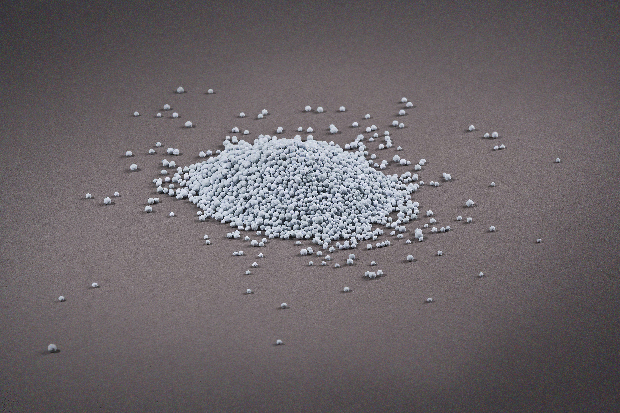Historically, upgrading the bottom of the barrel has been central to helping producers achieve high levels of productivity, competitiveness, resilience & profitability. Today we are faced with demanding challenges and promising opportunities - none more so than looking to decarbonise the downstream sector and secure a more sustainable future. So, what will be the role for Residue Upgrading & Conversion Technologies?
CATALYSTS - THE HEART OF THE REFINING PROCESS
New technologies developed during RnD provide continuous improvements with Catalyst formulations however, much remains to be done, whether with ebullated or fixed bed, more challenging crudes will require additional adjustments to the formulations. Working closely with customers and gaining a better understanding of the feedstock quality and requirements will allow for better, more customised solutions.
The mention of customised solutions raise the topic of end-to-end solutions - providing fresh catalysts and taking back spent catalysts - in particular, the recycling and regeneration aspect. Catalysts contain a lot of valuable metals that may be reused for other applications and industries. In the US for example, vanadium is termed a critical metal because of its use in some strategic security applications. Vanadium is also used in the manufacture of the redox flow battery (VRB) which can store clean energy for up to 30-40 years which is not the case with typical Lithium batteries. Rather than continuously mining these materials, extracting and reusing these metals from spent catalysts supports the circular economy and reclaims value. Having more control over the recycling of your spent catalysts is key. There are different extraction methods and these can impact, for example, the purity of the vanadium reclaimed. Equally, depending on the company you use, it is possible to reclaim up to 87% of the molybdenum which in theory, then leaves you vulnerable to only 13% of the market price of molybdenum when you purchase new catalysts. Equally, not recycling spent catalysts properly can seriously damage the reputation of the refinery. So, end-to-end solutions help the environment, society and the refinery reclaim value.

Catalyst lifecycle management is a real challenge in the Middle East. Some producers store their spent catalysts, but eventually, this leads to stockpiles and offloading these stockpiles becomes an issue. Other industries can use these spent catalysts, like cement factories, but often they refuse to accept them because of the residual content of heavy metals. Undoubtedly there is value in extracting expensive materials like vanadium and copper and there is good business potential in the region, it just needs the right service provider/s.
Catalysts remain at the heart of the refining process especially in the context of the bottom of the barrel
In the eastern province of Saudi Arabia, the Royal Commission has only approved one service provider to dispose of and regenerate spent catalysts. So, for those refineries that do regenerate their hydrotreating and hydrocracking catalysts, it's costly and the current business model doesn’t give them any benefit from the value of the reclaimed materials. Added to this, you can’t regenerate your spent catalysts indefinitely, you eventually have to dispose of them. As a result, one Middle Eastern refinery is taking a different approach to minimising the cost of catalyst recycling by extending the life of their catalysts, currently from 4 to 6 years. Such catalyst life extension is achieved by fine-tuning and carefully managing their process.
European refineries took a similar approach about a decade ago, however in some plants, they opted for shorter cycles. Not because of catalyst performance, but from a business perspective, the LP calculation demonstrated that longer cycles can negatively impact yield. Refiners with the right knowledge and experience know the importance of working closely with their catalyst provider. If product demand changes, the catalyst provider, who also understands the refiners’ units, can help them adapt their processes and catalysts to meet these short-term market developments.

Therefore, there are two obvious solutions for minimising the cost of catalyst handling and dealing with spent catalysts in a ‘greener’ way: one - to extend the life of your catalyst and two - to encourage more service providers to come to the region to rejuvenate, regenerate, extract precious elements and safely dispose spent catalysts.
Some catalyst providers do not provide recycling services but remain an integral part of lifecycle management supporting the regeneration and reuse of catalysts over disposal and use of new catalysts. Catalyst providers are continuously exploring ways to improve the lifespan of catalysts without compromising stability - minimising the difference between the start of the run and the end of the run, in terms of yield and product quality. If you can increase the lifespan of your catalysts from 2 ½ to 5 years, this will have a significant impact on ROI. The substantial increase in the cost of energy brought on by the current energy crisis is having an impact on the cost of catalyst production and even though refining margins are high, catalyst producers are working hard to minimise possible increases for end users. Another consideration is sustainability, with catalyst providers trying to reduce the carbon footprint of their own manufacturing facilities - some of the green solutions being trialled are liquid catalysts and solutions for carbon capture.
There is confidence that more catalyst recycling service providers will enter the market, but with the huge investment required, this will need the support of all producers as well as governments. The regional in-country value programmes (IKTVA in KSA and ICV in other GCC countries) encourage companies to manufacture locally and there is already an agreement in place to construct and operate a world-class ‘Metals Reclamation Complex’ for the recovery and recycling of metals in Saudi Arabia. Welcome news, but is it economically viable to build a catalyst recycling and disposal plant in each GCC country, or will this cause over-supply? Possibly, the answer is for GCC Producers to use such facilities collectively.
Conclusion
One fact remains, refiners will need to continue upgrading heavier, lower-value components and increasing conversion to curb low-value fuel oil production. With the shift toward petrochemicals and chemicals, there will be new opportunities and new diverse revenue streams. Catalysts will play a central role in reaching these objectives. Innovations & improvements will help to diversify, increase profitability, maximise production, increase integration & develop new revenue streams. Making the right selection in terms of catalyst management, waste management, and different recovery & regeneration techniques are highly important when it comes to deciding on the best operational strategy for the coming years.
